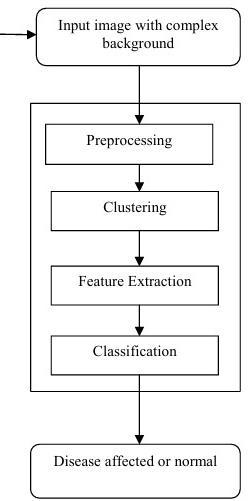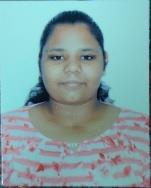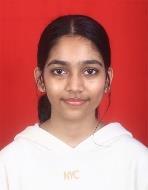
Volume: 12 Issue: 01 | Jan 2025 www.irjet.net


Volume: 12 Issue: 01 | Jan 2025 www.irjet.net
Aayushi Maurya1, Kaniz Fatima Baig2, Nupur Bodke3, Dr. Dhananjay Theckedath4
1,2,3 Students of Thadomal Shahani Engineering College , Mumbai, Maharashtra , India. 4Associate Professor of Thadomal Shahani Engineering College , Mumbai, Maharashtra , India.
Abstract - In2019,Indiawitnessedover10,000farmer suicides, driven by crop failures, overwhelming financial burdens, and debt distress. These tragedies were exacerbated by unpredictable weather patterns, pest infestations, and market volatility, highlighting the vulnerabilities faced by farmers and the lack of access to modernagriculturaltechnologies.Toaddresstheseissues, weintroduce FarmTech: Prediction and Recommendation System for Farmers, a versatile platform designed for farmers through data-driven insights. The platform offers a Fertilizer Recommendation System, which provides optimized solutions to enhance soil health and reduce chemical overuse. The Crop Recommendation System helpsfarmersselectthe mostsuitablecrops basedonsoil conditions and climate. Additionally, FarmTech integrates a Plant Disease Recognition System, employing image processing and machine learning to diagnose crop diseases and enable timely interventions quickly. To further enhance usability, an Interactive Chatbot is included to offer real-time advice and address farmer queries. By leveraging AI-driven technologies and realtime agricultural data, FarmTec aims to tackle the challenges of modern farming, promote sustainable practices, and provide farmers with the tools needed to navigate economic, environmental, and technological hurdles.
Key Words: Prediction, Recommendation, soil health, Plant Disease, AI-driven, sustainable, Fertilizer
1.
India's economy, which is among the fastest-growing in the world and is currently the fifth largest in terms of nominalGDP,isconfrontedwithconsiderableobstaclesin the agricultural sector. More than 50% of India's workforceisemployedinagriculture,whichgenerates16–17% of the nation's GDP and is mostly dependent on traditional practices. This reliance on primitive methods hinders production and restricts overall economic progress,especiallywhencombinedwithrestrictedaccess toinnovative,effectivefarmingtechnology.Asaresult,the industry deals with problems like low crop yields, inefficient resource use, and unsustainable farming methods, which strain rural livelihoods and have a wider impact on the national economy, limiting the potential of anindustryessentialtoIndia'sfoodsecurityandeconomic stability.
Theseinefficienciescontributeto severefinancial distress among farmers, leading to a tragically high number of farmer suicides. In 2019 alone, over 10,000 farmer suicides were reported, largely due to crop failures, mountingdebts,andunpredictableweatherconditions.At thecoreofthesechallengesisthelackofaccesstoproper farming methods, advanced tools, and timely information, which continues to undermine the growth and sustainabilityofIndia’sagriculturallandscape.
Machine learning (ML) is transformative in shaping various aspects of our lives, from enhancing everyday conveniences to driving innovation in multiple industries. Its ability to process vast amounts of data, recognize patterns, and make intelligent predictions has led to transformative changes in sectors such as healthcare, finance, transportation, and entertainment. Across industries, ML is a crucial tool for improving efficiency, personalizing experiences, and driving breakthroughs. When it comes to agriculture, machine learning has the potential toradicallytransformfarmingpractices,helping toaddressmanyofthechallengesfacedbyfarmerstoday. Agriculture is a data-rich field where decisions about soil management, crop selection, pest control, irrigation, and yieldpredictioncanallbenefitfromdata-driveninsights.
Our project aims to address all these issues with FarmTech: Prediction and Recommendation System for Farmers, a platform designed to revolutionize farming practices in India by offering data-driven insights and AIpowered tools. FarmTech integrates a Fertilizer Recommendation System, which provides tailored advice based on soil health to ensure optimal nutrient use, enhancing crop growth and preserving soil quality. The Crop Recommendation System suggests the most suitable crops based on soil composition, climate conditions, and market trends, helping farmers make informed decisions thatincreaseyieldpotential.
Additionally, FarmTech includes a Plant Disease Recognition System, leveraging image processing and machine learning to quickly diagnose crop diseases and recommend treatments. To further support farmers, an Interactive Chatbot is available for real-time query resolution, offering instant advice on various agricultural practices.

International Research Journal of Engineering and Technology (IRJET) e-ISSN:2395-0056
Volume: 12 Issue: 01 | Jan 2025 www.irjet.net p-ISSN:2395-0072
This study aims [1] to assist farmers in selecting appropriatecropsbasedonmeteorologicalconditionsand soil factors. Using the Naive Bayes algorithm, the study collects data on temperature, humidity, and moisture contenttohelpfarmerschoosecropsthatwillyieldbetter outcomes. The article emphasizes the importance of modernizing agricultural practices to address climate changeconcernsandaimstoequipfarmerswitha mobile applicationthathelpspredictcropsandboostagricultural production.
The paper [2] highlights the role of machine learning in enhancing agricultural productivity in India, which contributes significantly to the national GDP. It reviews various machine learning techniques for crop yield prediction based on climatic and soil parameters. The study compares algorithms such as SVM, Decision Trees, and Random Forests, concluding that these methods can effectively assist farmers in selecting appropriate crops, thereby improving yields and addressing food security challenges.
In [3] they study and investigate the use of the Random Forest algorithm for crop yield prediction, addressing the challenges posed by varying climatic conditions. The authors collect crop growth datasets and apply machine learning techniques to analyze crop production. The Random Forest classifier demonstrates high accuracy in predictingcropyields,suggestingitspotentialasareliable tool for farmers to optimize crop production based on currentclimaticdata.
This paper [4] research presents a mobile application designed to help farmers in India predict crop yields and selectprofitablecropsusing machinelearningalgorithms. Thesystemutilizesvarious algorithms,includingRandom Forest and SVM, to analyze rainfall, temperature, and soil type. The Random Forest algorithm achieves the highest accuracyof95%,providingfarmerswithvaluableinsights into crop selection and optimal fertilizer usage, thereby aiming to improve agricultural productivity and reduce farmerdistress.
In their [5] discusses about the importance of crop yield prediction in India, emphasizing the need for advanced agricultural practices due to the rising food demand from a growing population. It explores various machine learning algorithms applied to agricultural datasets from different states, including Linear Regression, Random Forest, and Gradient Boosting. The study finds that the GradientBoostingRegressorachievesthehighestaccuracy of 87.9% for yield prediction, while the Random Forest Regressor excels in predicting crop production with an accuracy of 98.9%. The research aims to assist farmers in
maximizing profits and addressing challenges in crop yield.
Table -1: ApproachtoCropRecommendationand perdictionsystem
Author ProposedModel Accuracy
M.Kalimuthuet.al (2020)[5] NaïveBayes 97%
SBharathet.al (2020)[9]
SupportVector Machine(SVM), DecisionTree(DT), K-Nearest Neighbor,Random Forest(RF)
DecisionTree Classifier
V.Geethaet.al (2020)[6] NaïveBayesandRF 95%
ShilpaMangeshP et.al(2021)[7]
PayalGulatiand SumanKumar (2020)[11]
RandomForest Classifier
SVM,K-Nearest Neighbor, MultivariateLinear Regression, ArtificialNeural Network,RF 95% RandomForest Classifier
LinearRegression, RF,DT,Gradient Boosting Regression,Ridge Regression, Polynomial Regression 98.9% RandomForest Classifier
From the above table we conclude the comparison of various crop recommendation and prediction systems highlights that ML models such as RF, SVM, and Naïve Bayes are commonly used and effective for this task. Among these models, RF consistently provides high accuracy, with results ranging from 95% to 99.87%, makingitareliablechoiceforcropprediction.
This paper [6] discusses about the Machine learning techniques, particularly Support Vector Machines (SVM) and Random Forest, are increasingly utilized for predictingcropyieldandrecommendingfertilizers.These algorithms analyze various data, including soil nutrients and environmental conditions, to optimize agricultural productivity. The proposed system classifies soil types, predictscropyields,andsuggestssuitablefertilizersbased on historical data. Experimental results indicate that SVM excels in yield prediction with an accuracy of 99.47%, while Random Forest is effective for soil classification at 86.35% accuracy. This approach aims to assist farmers in making informed decisions for better crop management andsustainability.

International Research Journal of Engineering and Technology (IRJET) e-ISSN:2395-0056
Volume: 12 Issue: 01 | Jan 2025 www.irjet.net p-ISSN:2395-0072
In the paper [7] In the paper [7] practices are based on machine learning and Internet of Things (IoT) technologies that revolutionized fertilizer prediction and detection in agriculture. A recent study presents a Crop and Fertilizer Recommendation System (CFRS) that employspredictivemodelstooptimizefertilizerusebased on specific soil conditions and crop requirements. This system achieves a remarkable 97% accuracy in recommendations, enabling farmers to make informed decisions that enhance productivity and sustainability. By leveragingreal-timedatafromsensors,theCFRSprovides tailored guidance on both crop selection and appropriate fertilizer application, addressing the inefficiencies of traditional farming practices and promoting better resourcemanagementinregionslikeRwanda.
Thestudyfrompaper[8]Thestudyfrompaper[8]focuses on predicting and detecting soil nutrient content and fertilizerrequirementsusingmachinelearningalgorithms. It compares the performance of Support Vector Machine (SVM), Decision Tree (DT), and Multilayer Perceptron (MLP) in classifying soil nutrients like nitrogen, phosphorus,andpotassium(NPK).MLPoutperformswith a 94% accuracy, making it highly effective for fertilizer recommendations. The study emphasizes the importance ofoptimizingfertilizerusetopreventsoildegradationand improve crop yield, addressing the overuse of chemical fertilizersthroughaccuratenutrientanalysis.
In [9] we discuss about how the Machine learning and deeplearningtechniquesareincreasinglybeingappliedto fertilizer prediction and detection, aiming to optimize agricultural output. Algorithms such as SVM, CNN, and MLParecommonlyusedtoanalyzesoilnutrientlevelsand predict the amount of fertilizer required for different crops. These models ensure precise fertilizer recommendations, which prevent overuse and enhance crop yields. Studies show that using such technologies improves accuracy in both fertilizer estimation and crop selection,withsomemodelsachievingupto94%accuracy inpredictions.
This research [10] uses Machine learning techniques which predict precise fertilizer dosages, such as nitrogen, phosphorus, and potassium, for specific farmlands. By analyzingsoildata(e.g.,pH,electricalconductivityEC,and nutrient levels) through algorithms like CART regression, modelsoffertailoredrecommendationsfordifferentcrops and zones. These predictions help farmers optimize fertilizer use, reduce environmental impact, and make informed financial decisions based on target yields. This approach enhances precision agriculture, leading to more sustainablefarmingpractices
Table -2: ApproachtoFertilizerRecommendationsystem
Author ProposedModel Accuracy
DBondreetal. (2019)[6] SVM,RF 99.47%(SVM)
SReshmaJuhietal. [8] SVM,DT, Multilayer Perceptron(MLP) 94% Multilayer Perceptron
SDevietal.[9] SVM,Convolutional NeuralNetwork (CNN),MLP 94% Multilayer Perceptron
SinghPetal.[10] Classificationand RegressionTree (CART) 90%(Nitrogen)
Hence, Machine learning techniques such SVM, RF, Multilayer Perceptron (MLP), and Convolutional Neural Networks (CNN) have proven highly effective in fertilizer recommendation systems. SVM excels in crop yield prediction with 99.47% accuracy, while MLP achieves 94%accuracyinnutrientclassification.SystemslikeCFRS, with 97% accuracy, show the potential of combining IoT andmachinelearningtooptimizeagriculturalpractices.
This paper [11] presents an image processing system utilizing Support Vector Machine (SVM) classification to identify and classify two major tea leaf diseases in Bangladesh: brown blight and algal leaf disease. The methodology involves capturing images of tea leaves, followed by preprocessing steps such as normalization and color space conversion to enhance image quality. A totalofelevenfeaturesareanalyzedforclassification,with three less effective features eliminated to improve processing speed while maintaining an accuracy of over 90%.Thesystemsignificantlyreducestheprocessingtime per leaf by approximately 300 ms compared to previous methods, enabling more efficient disease detection and classification. This advancement aims to bolster the competitiveness of the tea industry in Bangladesh by minimizing losses from leaf diseases and enhancing overallproductionrates.
The paper [12] explores the challenge of timely and accurate identification of plant diseases, especially in developing countries where crop production is significantly impacted by late detection. The study leverages machine learning models, including Support Vector Machine (SVM), k-Nearest Neighbors (KNN), RandomForestClassifier(RFC),andConvolutionalNeural Network(CNN),toclassifyandpredictplantdiseasesfrom images. Haralick texture features, such as contrast, correlation, and entropy, were used for image feature extraction. Among the models tested, CNN achieved the highest accuracy of 97.89%, followed by RFC at 87.43%,

International Research Journal of Engineering and Technology (IRJET) e-ISSN:2395-0056
Volume: 12 Issue: 01 | Jan 2025 www.irjet.net p-ISSN:2395-0072
SVM at 78.61%, and KNN at 76.96%. The study underscores the potential of using advanced machine learning techniques to reduce farmers' dependency on fieldexpertsandenhancediseasedetectionaccuracy.
This study [13] explores the application of machine learning models to detect early and late blight diseases in potato crops. Using image processing techniques, it analyzes potato leaf images, segments disease-affected regions with fuzzy c-means clustering, and extracts texture features from HSV images for classification. The research compares three classifiers Support Vector Machine(SVM),RandomForest(RF),andArtificialNeural Network(ANN) withANNachievingthebestaccuracyat 92%, followed by SVM at 84%, and RF at 79%. The study underscores the importance of automated disease detection tools to improve crop management and minimizelossesforfarmers.
The research paper [14] presents a method for detecting and classifying plant leaf diseases using a K-nearest neighbor (KNN) classifier, focusing on five specific diseases: Alternaria alternata, anthracnose, bacterial blight, leaf spot, and citrus canker. The approach involves several key steps: image acquisition, color space conversion to the Lab model, color segmentation using KNN, morphological operations to isolate disease-affected areas, and feature extraction based on texture and color characteristics. The system achieves a high classification accuracy of 96.76% by analyzing a dataset of 237 leaf images. Performance metrics such as the Dice Similarity Coefficient (DSC), Mean Square Error (MSE), and StructuralSimilarityIndex(SSIM)areusedtoevaluatethe effectiveness of the segmentation process, demonstrating strongresultsindiseasedetection.
In[15] wefocuson detectingandclassifying soybean leaf diseases using image processing techniques, combined with multiclass Support Vector Machine (SVM) and KNearest Neighbors (KNN) classifiers. The study targets threecommonsoybeandiseases:BacterialBlight,Frogeye Leaf Spot, and Septoria Brown Spot . The images of infected
leaves are processed to enhance quality, remove backgrounds, and segment the diseased regions using the Incremental K-means clustering technique. Color and texturefeaturesareextractedfromthesegmentedregions to train the classifiers. The system measures disease severity by calculating the proportion of diseased area relative to the total leaf area. The SVM classifier achieved an accuracy of 87.3%, while the KNN classifier reached 83.4%. The study demonstrates the effectiveness of machine learning in improving disease detection and classificationforagriculturalapplications.
Table -3: ApproachtoFertilizerRecommendationsystem
Author ProposedModel Accuracy
Rokeya Mumtahana Mou1etal. [11] SVM
B.Hatuwalet al.[12] RF,KNN,SVM, ConvolutionalNeural Network
SupportVector Machine(SVM)
Convolutional NeuralNetwork (CNN)
KrishnanN etal.[13] SVM,RF,andANNin PotatoBlight 92% ArtificialNeural Network(ANN)
Eftekhar Hossainet.al [14] KNNClassifier
SachinB. Jadhavet.al (2019)[15] SVM,andKNN classifier
SupportVector Machine(SVM)
By observing the above table, we conclude that Convolutional Neural Network (CNN), which achieved the highest accuracy of 97.89% in study. However, SVM also demonstrates strong performance with consistently high accuracy across multiple studies, making it another reliableoption.
InthecontextofFarmTech,machinelearningisleveraged in several key areas to empower farmers with intelligent solutions.
Crop Recommendation System: MLmodelsevaluate soil characteristics, weather patterns, and market trendstosuggestthemostsuitablecropsforaregion. Bylearningfrompastdata,thesemodelshelpfarmers choosecropsthatarelikelytothrive,maximizingyield andprofitability.
Fertilizer Recommendation System: Machine learning algorithms analyze soil data, historical crop yields, and environmental factors to recommend optimalfertilizerusage.Thishelpsreducetheoveruse of chemical fertilizers, improving soil health, and ensuringsustainablefarmingpractices.

Fig1–CropandFertilizerrecommendationprocess

International Research Journal of Engineering and Technology (IRJET) e-ISSN:2395-0056
Plant Disease Recognition System: One of the most critical uses of machine learning in FarmTech is in plant disease detection. Through image processing anddeeplearningtechniques,thesystemcananalyze imagesofcropsandaccuratelyidentifydiseasesbased on visual patterns. This early detection allows for timely intervention, reducing the potential for crop loss.

Fig2–Plantdiseaserecognitionprocess.
Interactive Chatbot: The chatbot utilizes natural language processing (NLP), a branch of machine learning, to understand farmer queries and provide relevant solutions in real time. It can learn from previous interactions, improving its ability to assist farmers with personalized recommendations and problem-solving.
By incorporating machine learning, FarmTech provides farmers with predictive, personalized, and scalable solutions that optimize farming practices, mitigate risks, and contribute to more sustainable agriculture. AI ensures that farmers can make databacked decisions, reducing guesswork and improving outcomesacrossvariousfarmingactivities.
The FarmTech: Prediction and Recommendation System for Farmers is a noteworthy development in tackling the various issues that Indian farmers confront. FarmTech boosts agricultural output and encourages sustainable practices, which are essential for farming's long-term sustainability,byfusingmachinelearninganddata-driven insights. The system's several parts from crop and
Volume: 12 Issue: 01 | Jan 2025 www.irjet.net p-ISSN:2395-0072 © 2025, IRJET | Impact Factor value: 8.226 | ISO 9001:2008
fertiliser recommendations to the identification of plant diseases give farmers the critical information they need to make wise decisions, reducing the likelihood of crop failuresandsubsequentfinancialhardship.Intheend,this platform represents a proactive approach to contemporary farming, giving farmers the ability to successfully negotiate the complicated rules of their surroundingsandenhanceIndia'sagriculturallandscape
[1] M. Kalimuthu, P. Vaishnavi, and M. Kishore, “Crop predictionusingmachinelearning,”in Proceedings of the 3rd International Conference on Smart Systems and Inventive Technology, ICSSIT 2020, Institute of Electrical and Electronics Engineers Inc., Aug. 2020, pp. 926–932. doi: 10.1109/ICSSIT48917.2020.9214190.
[2] S.Bharath,Y.B.L,andV.R.Javalagi,“Comparative Analysis of Machine Learning Algorithms in The StudyofCropandCropyieldPrediction.” [Online]. Available:www.ijert.org
[3] V. Geetha, A. Punitha, M. Abarna, M. Akshaya, S. Illakiya, and A. P. Janani, “An Effective Crop Prediction Using Random Forest Algorithm,” in 2020 International Conference on System, Computation,AutomationandNetworking,ICSCAN 2020, Institute of Electrical and Electronics Engineers Inc., Jul. 2020. doi: 10.1109/ICSCAN49426.2020.9262311.
[4] S. M. Pande, P. K. Ramesh, A. Anmol, B. R. Aishwarya, K. Rohilla, and K. Shaurya, “Crop Recommender System Using Machine Learning Approach,” in Proceedings - 5th International Conference on Computing Methodologies and Communication,ICCMC2021, Institute of Electrical and Electronics Engineers Inc., Apr. 2021, pp. 1066–1071. doi: 10.1109/ICCMC51019.2021.9418351.
[5] P. Gulati and S. Kumar Jha, “Efficient Crop Yield Prediction in India using Machine Learning Techniques.” [Online]. Available: https://www.hilarispublisher.com/openaccess/agriculture-role-
[6] D. A. Bondre and M. Santosh Mahagaonkar, “PREDICTION OF CROP YIELD AND FERTILIZER RECOMMENDATION USING MACHINE LEARNING ALGORITHMS,” 2019. [Online]. Available: http://www.ijeast.com
[7] C. Musanase, A. Vodacek, D. Hanyurwimfura, A. Uwitonze,andI.Kabandana,“Data-DrivenAnalysis and Machine Learning-Based Crop and Fertilizer

International Research Journal of Engineering and Technology (IRJET) e-ISSN:2395-0056
Volume: 12 Issue: 01 | Jan 2025 www.irjet.net p-ISSN:2395-0072
Recommendation System for Revolutionizing Farming Practices,” Agriculture (Switzerland), vol. 13, no. 11, Nov. 2023, doi: 10.3390/agriculture13112141.
[8] S. Juhi Reshma and D. John Aravindhar, “International Journal of INTELLIGENT SYSTEMS AND APPLICATIONS IN ENGINEERING A Systematic Approach of Classifying Soil & Crop Nutrient Using Machine Learning Algorithms.” [Online].Available:www.ijisae.org
[9] S.L.Devi,U.Ramesh,P.Preethi,R.Swapnique,and A. Bhavani, “The Review on Crop and Fertilizer Prediction using Deep Learning,” 2022. [Online]. Available:www.ijrpr.com
[10] P. Singh, C. Garg, and A. Namdeo, “Applying MachineLearningTechniquestoExtractdosagesof Fertilizers for Precision Agriculture,” in IOP ConferenceSeries:EarthandEnvironmentalScience, IOP Publishing Ltd, Dec. 2020. doi: 10.1088/17551315/614/1/012136.
[11] Rokeya Mumtahana Mou1, Mohammed Mahedi Hasan2, Sajib Chakraborty1, and M. Abdur Razzak1, 2018IEEE14thInternationalColloquium onSignal Processing&ItsApplications :9-10March 2018, Batu Feringghi, Malaysia. Institute of ElectricalandElectronicsEngineers,2018.
[12] B. Hatuwal, B. Joshi, B. K. Hatuwal, and A. Shakya, “Plant Leaf Disease Recognition Using Random Forest,KNN,SVMandCNN”,doi:10.17562/PB-622.
[13] N. . Krishnan and M. . Karthikeyan, 2017 IEEE International Conference on Computational Intelligence and Computing Research : 2017 December 14-16 : venue : Tamilnadu College of Engineering, Coimbatore, Tamilnadu, India Institute of Electrical and Electronics Engineers, 2017.
[14] 2019 International Conference on Electrical, Computer and Communication Engineering : 7-9 February2019,Cox’sBazar,Bangladesh.Instituteof ElectricalandElectronicsEngineers,2019.
[15] S. B. Jadhav, V. R. Udupi, and S. B. Patil, “Soybean leaf disease detection and severity measurement using multiclass SVM and KNN classifier,” International Journal of Electrical and Computer Engineering,vol.9,no.5,pp.4077–4091,Oct.2019, doi:10.11591/ijece.v9i5.pp4077-4091.




Aayushi Maurya is pursuing BE in Electronics and Tele-communication from Thadomal Shahani Engineering College,Mumbai,Maharashtra
Kaniz Fatima Baig is pursuing BE in Electronics and Tele-communication from Thadomal Shahani Engineering College,Mumbai,Maharashtra
Nupur Bodke is pursuing BE in Electronics and Tele-communication from Thadomal Shahani Engineering College,Mumbai,Maharashtra
Dr.DhananjayTheckedathisAssociate Professor at Thadomal Shahani Engineering College , Mumbai, Maharashtra
2025, IRJET | Impact Factor value: 8.226 |